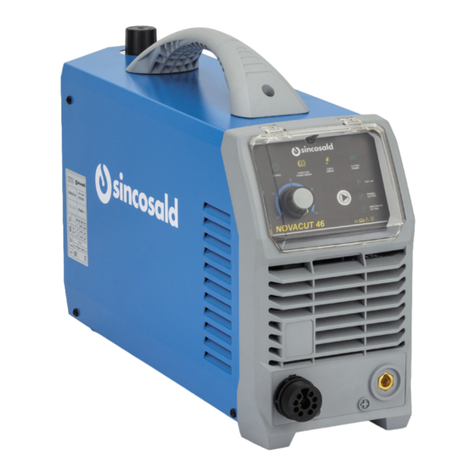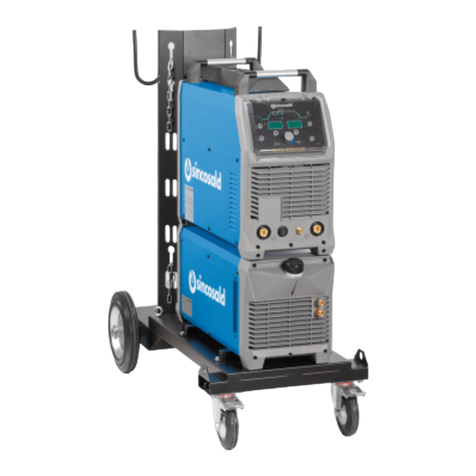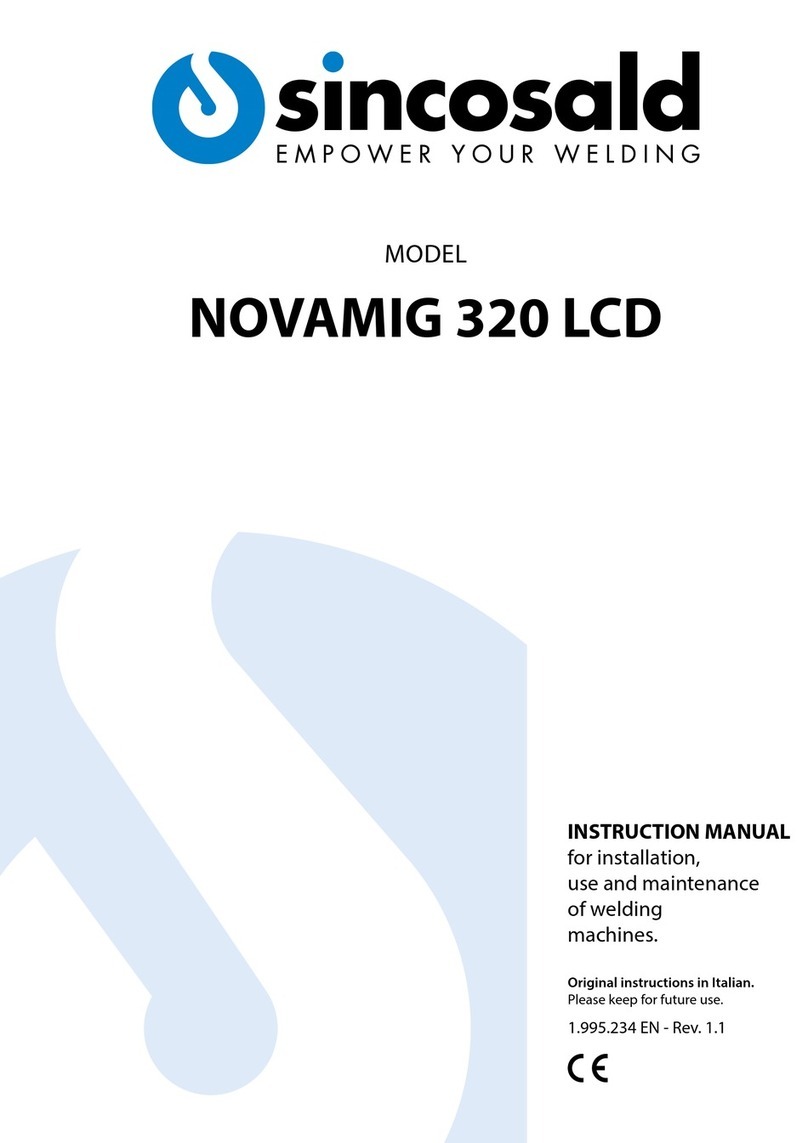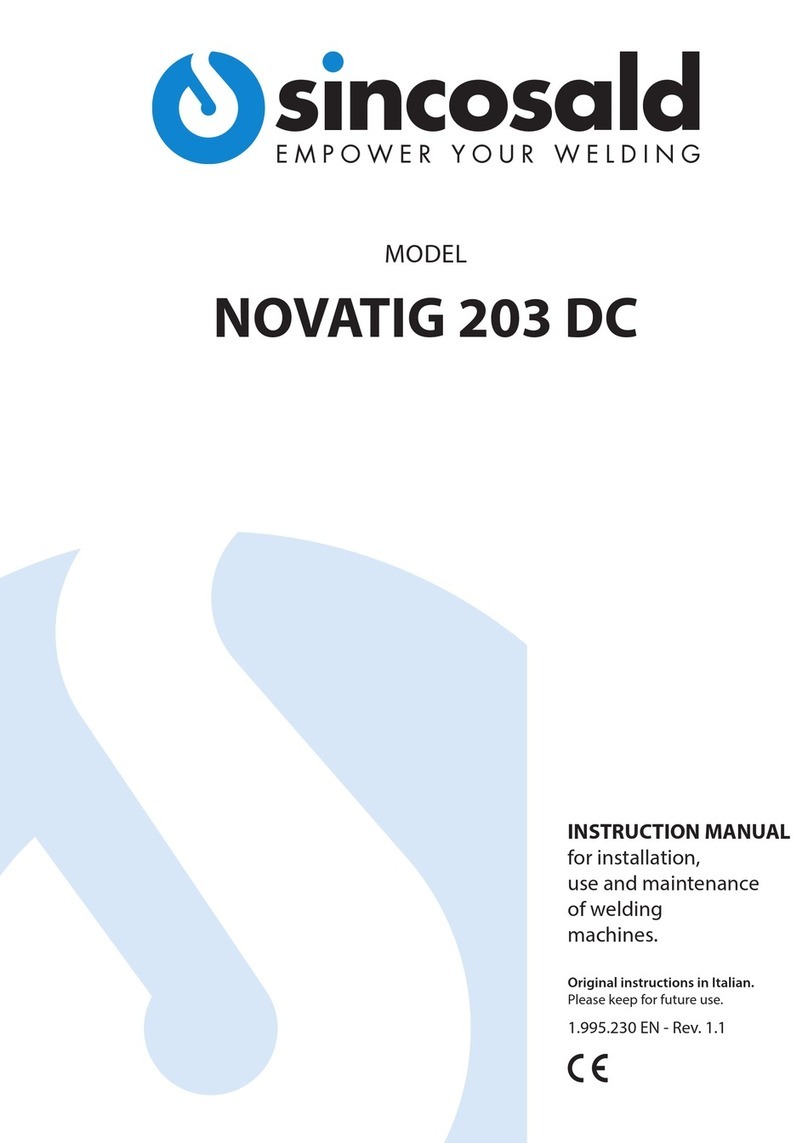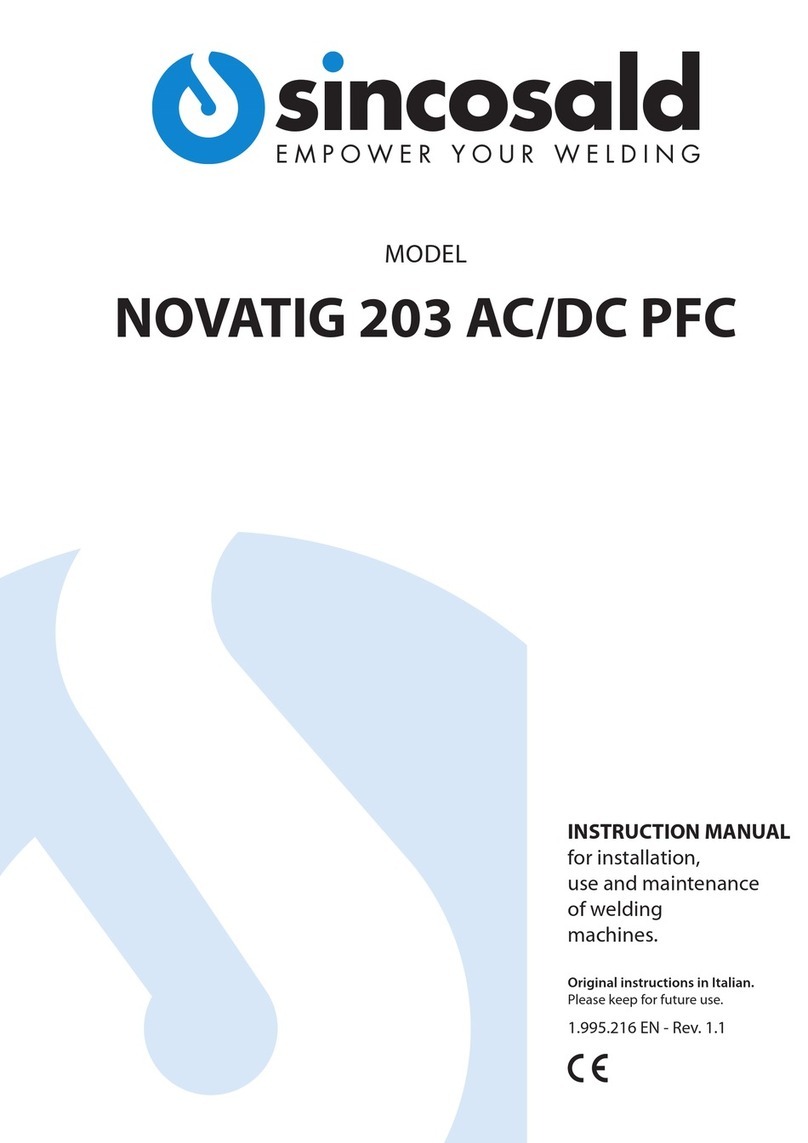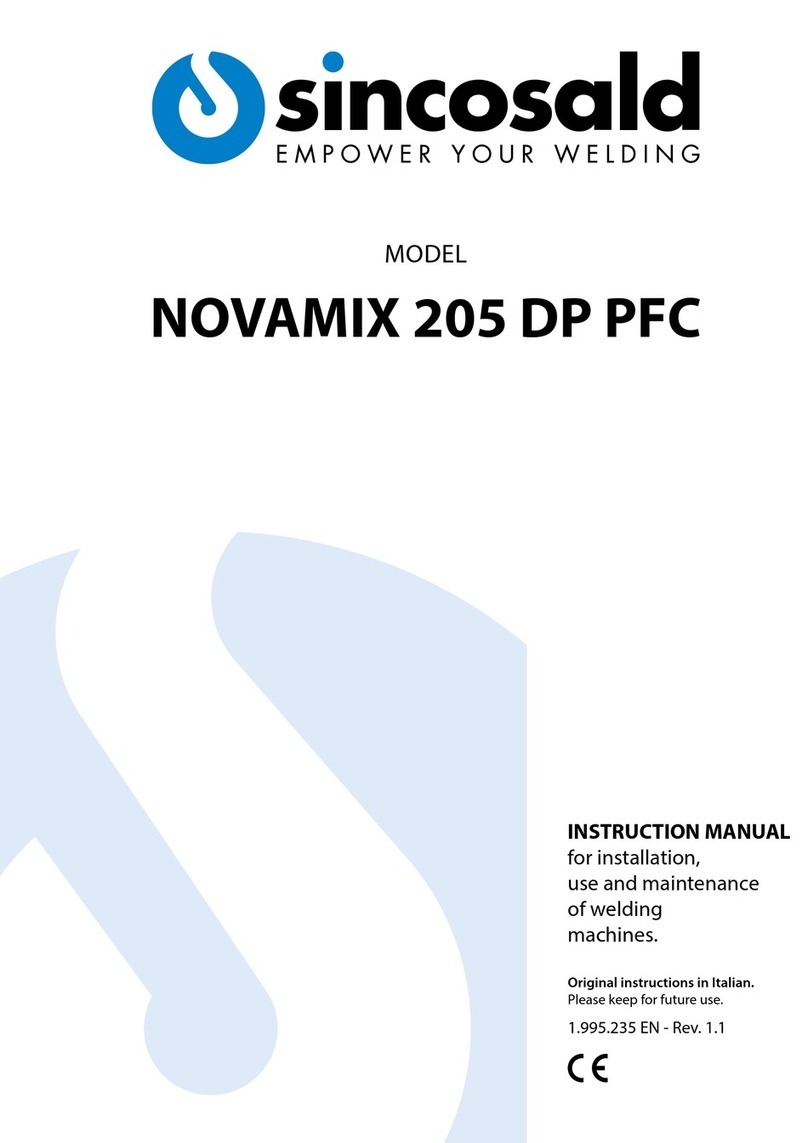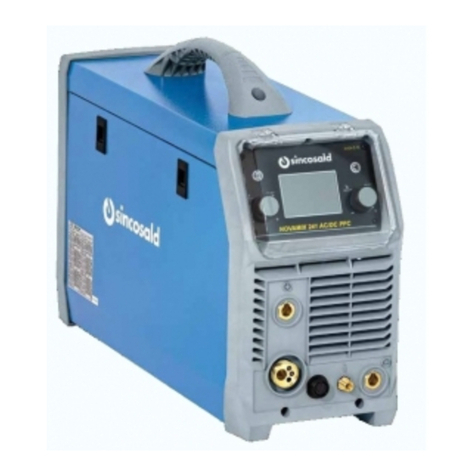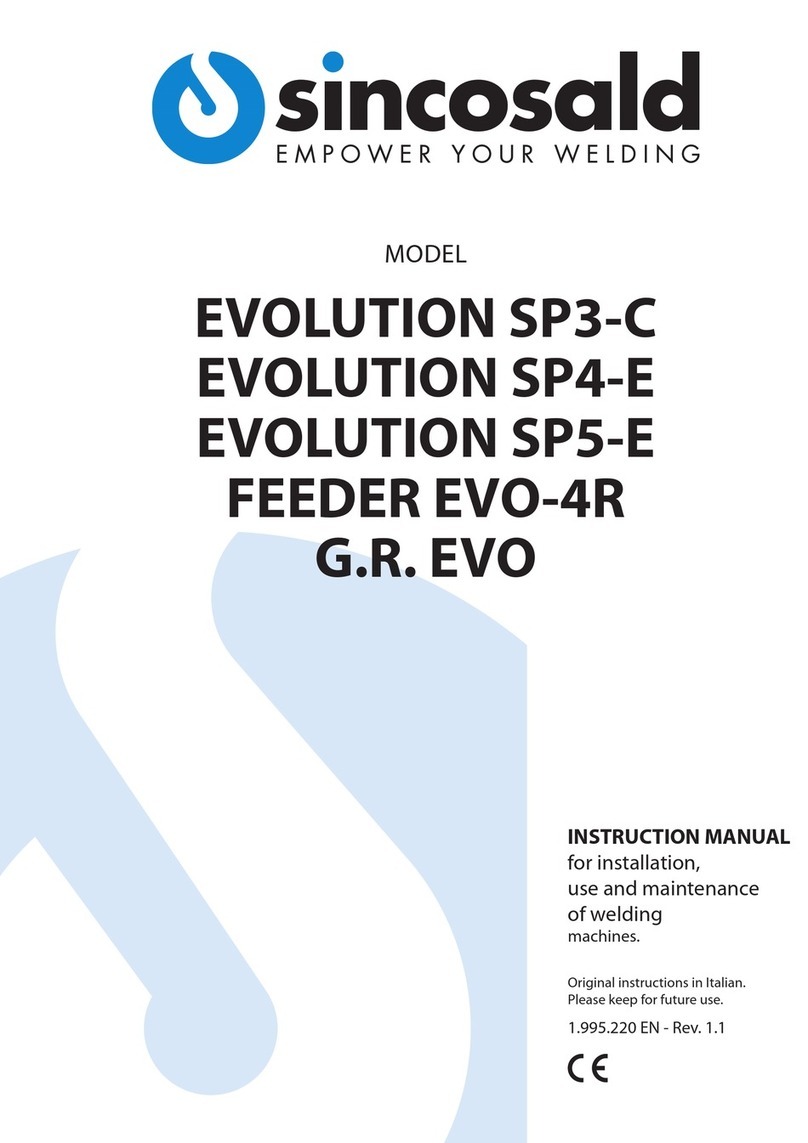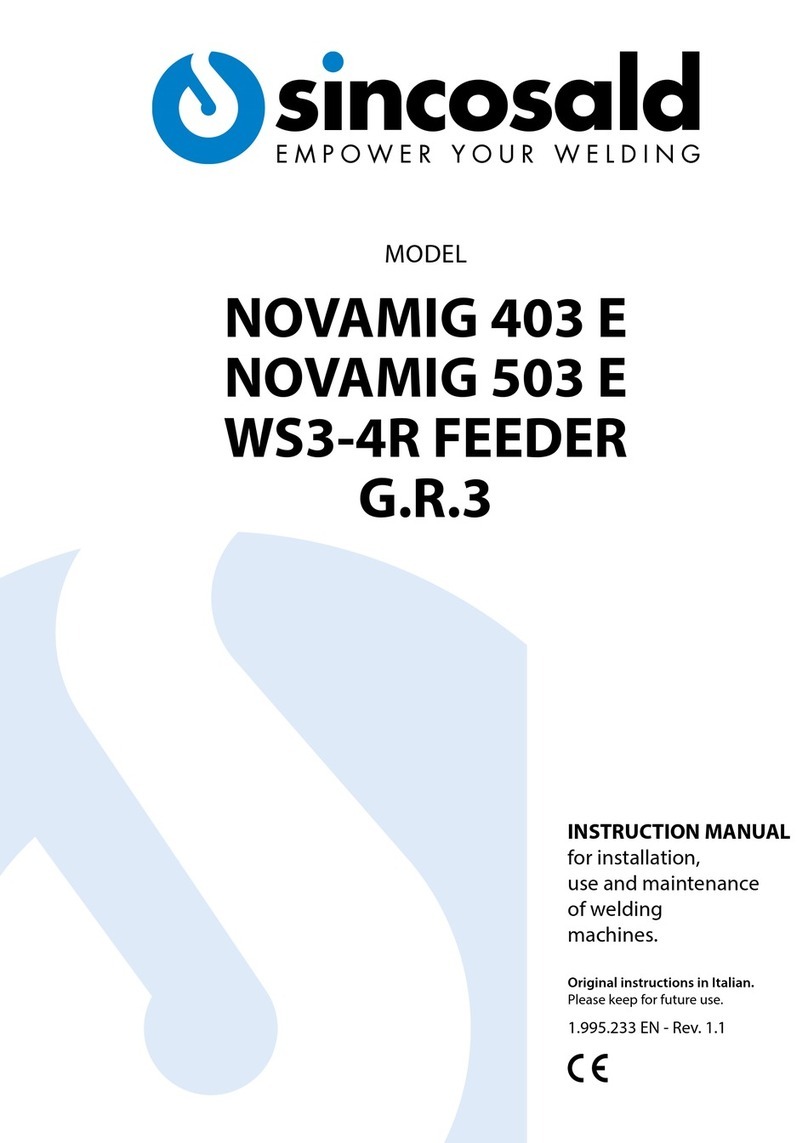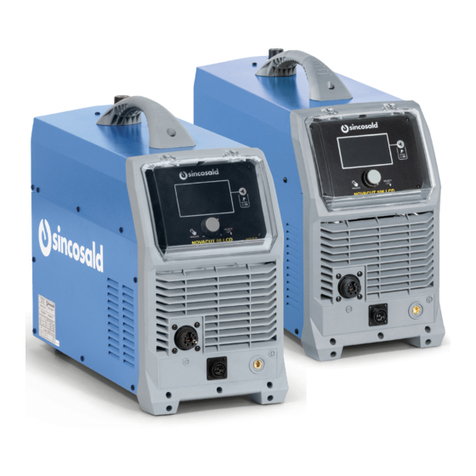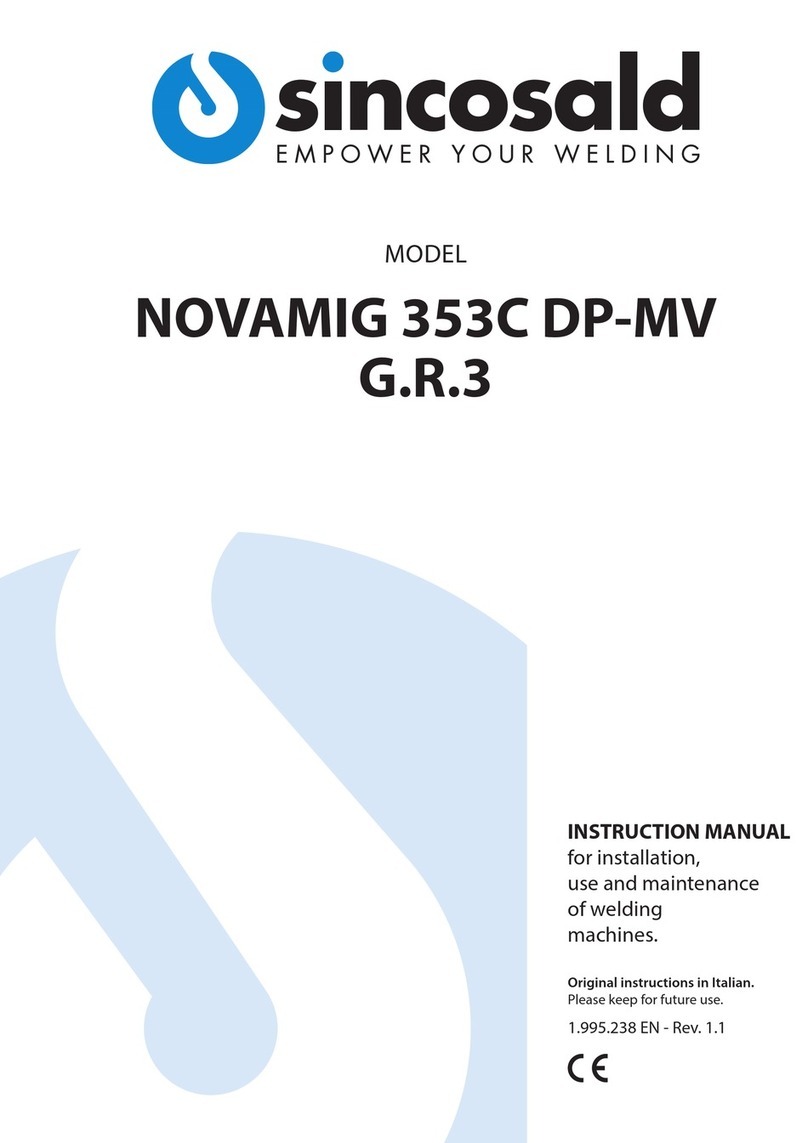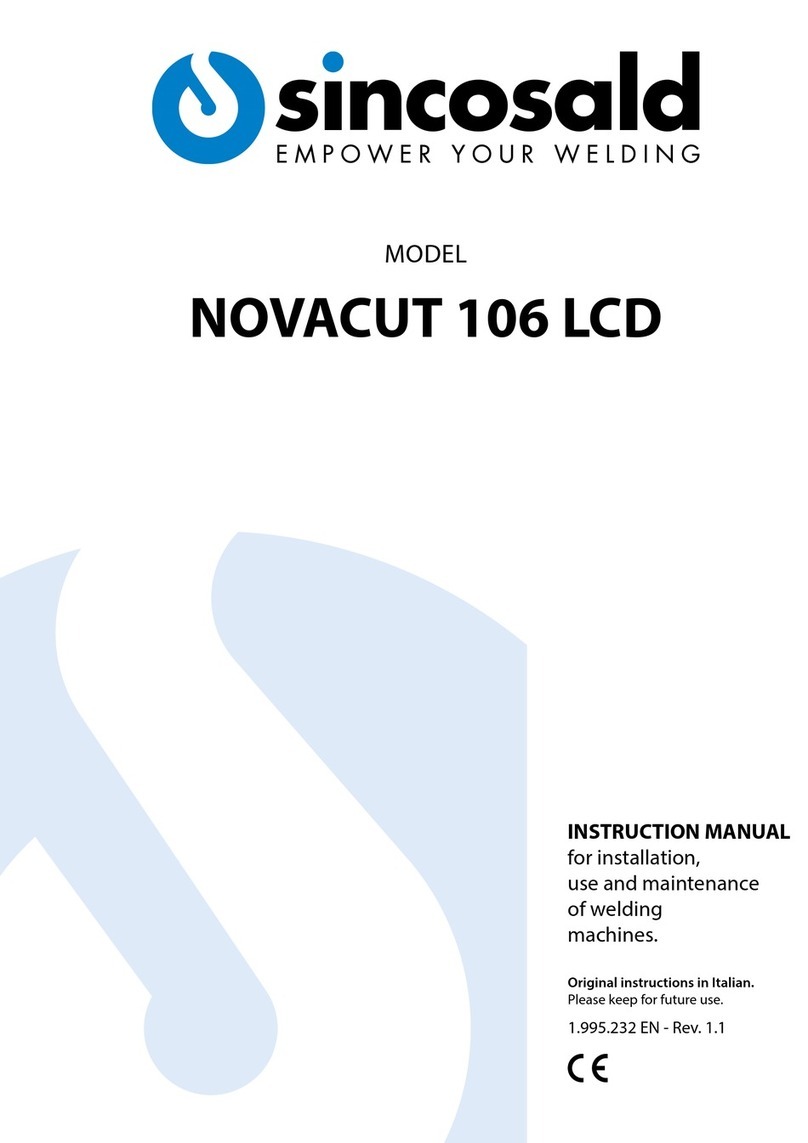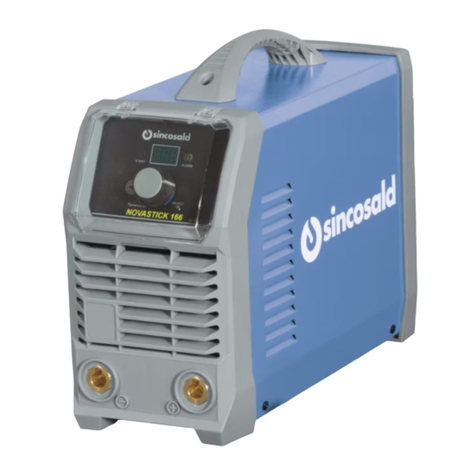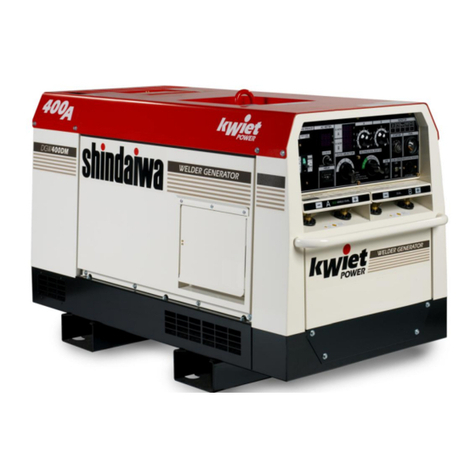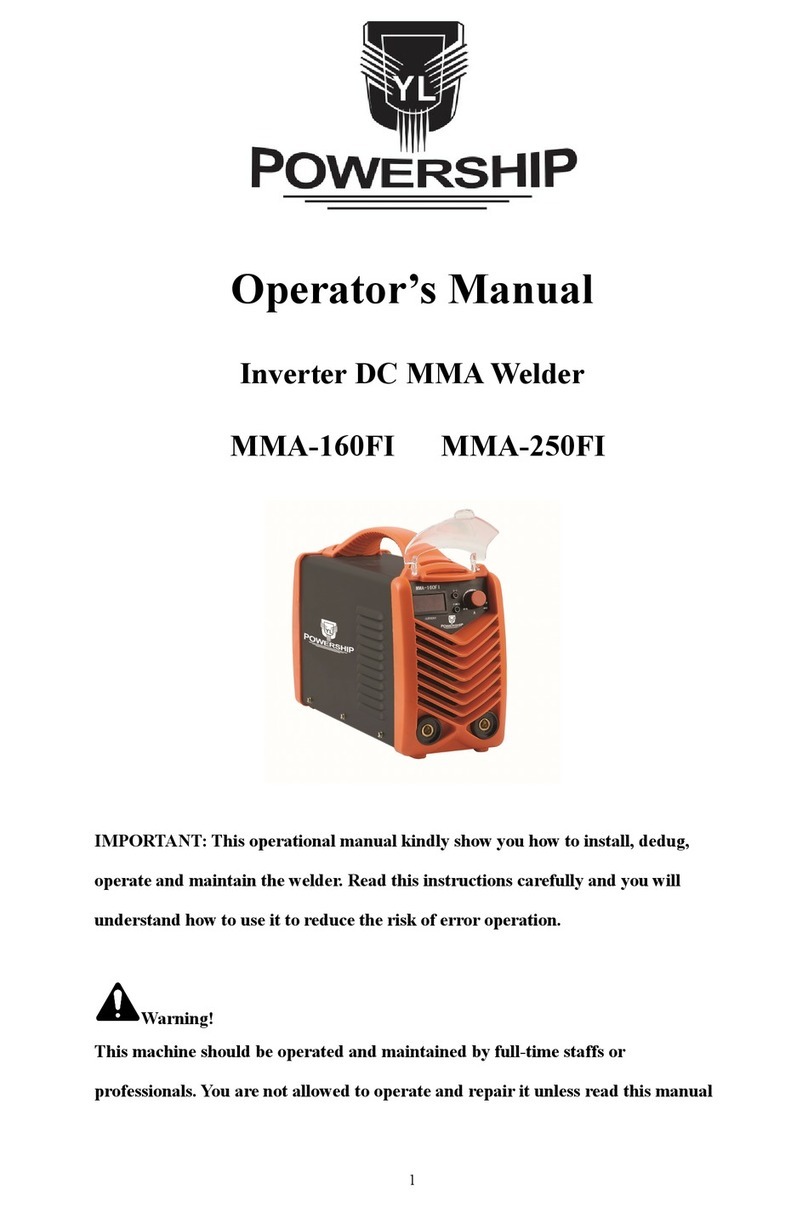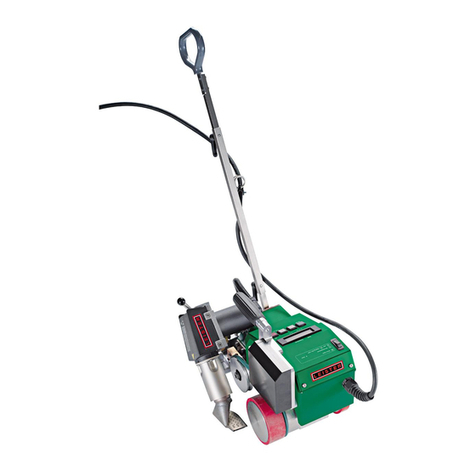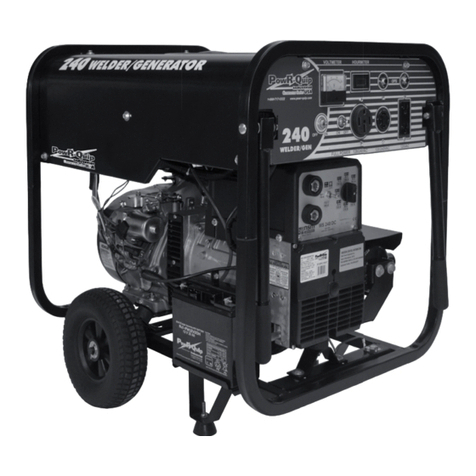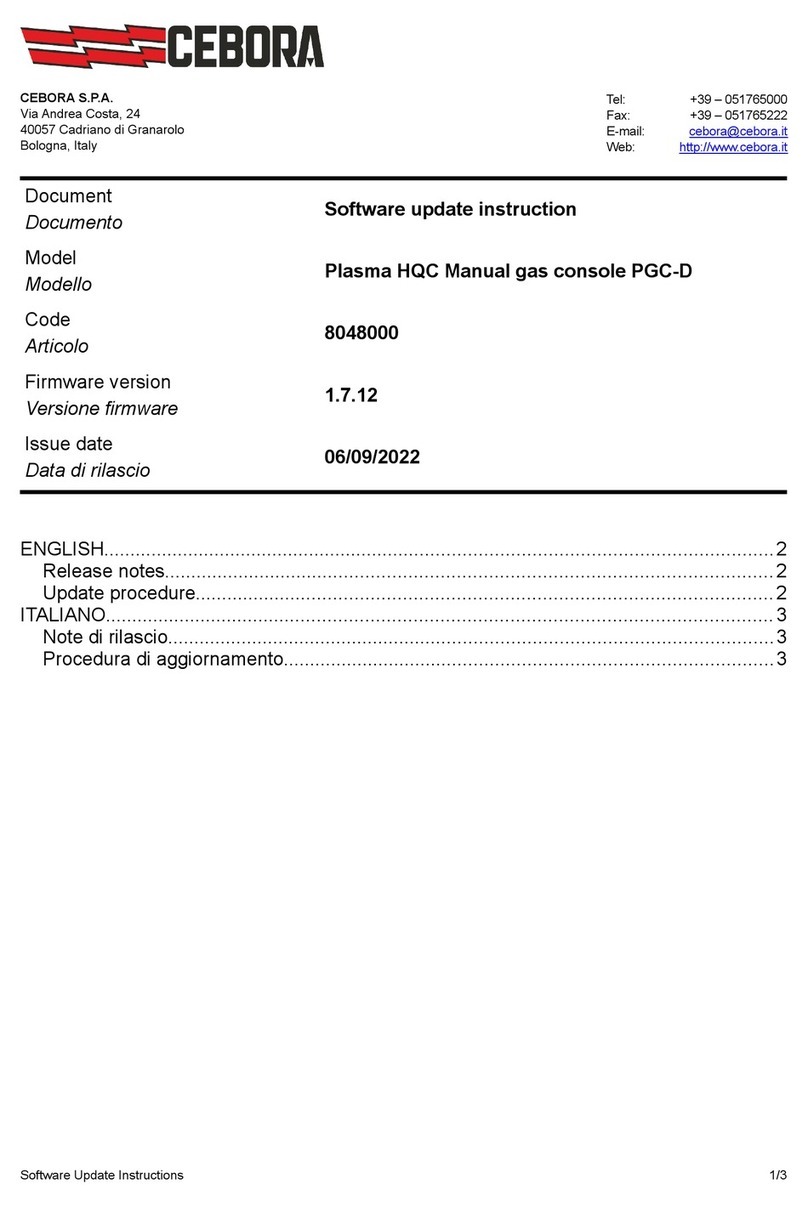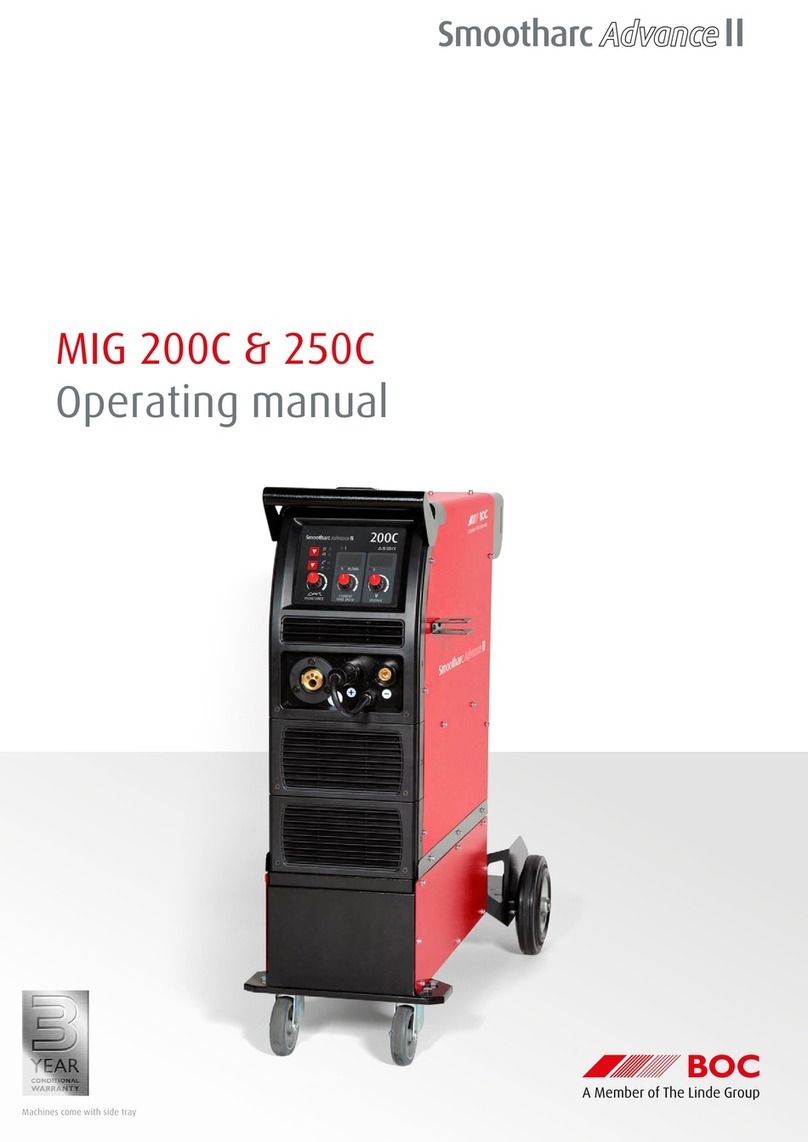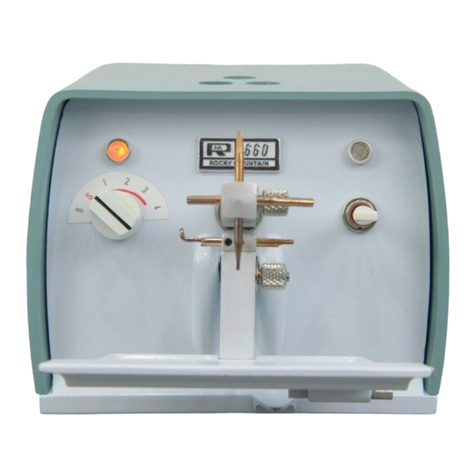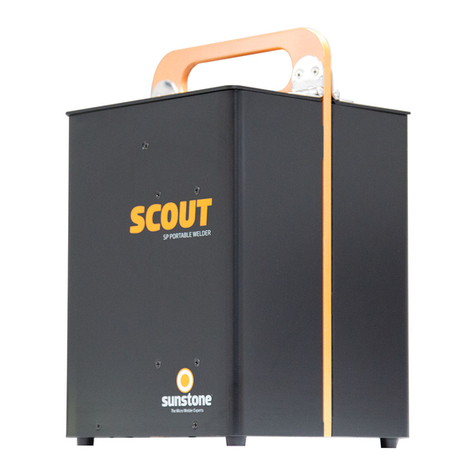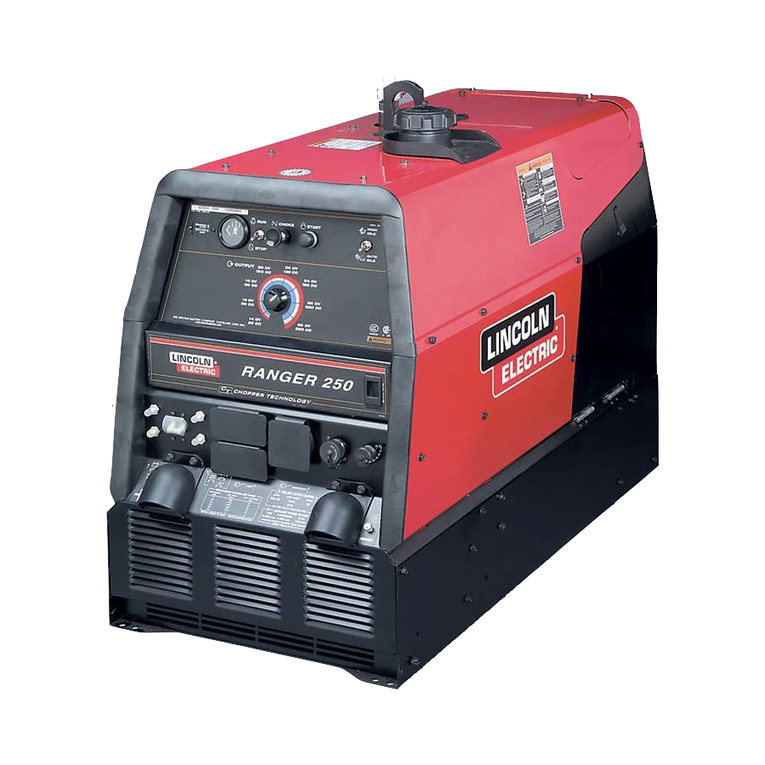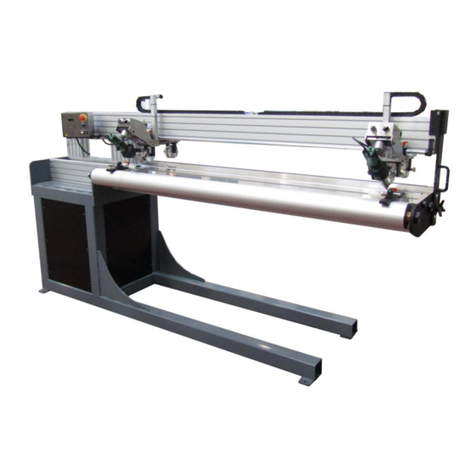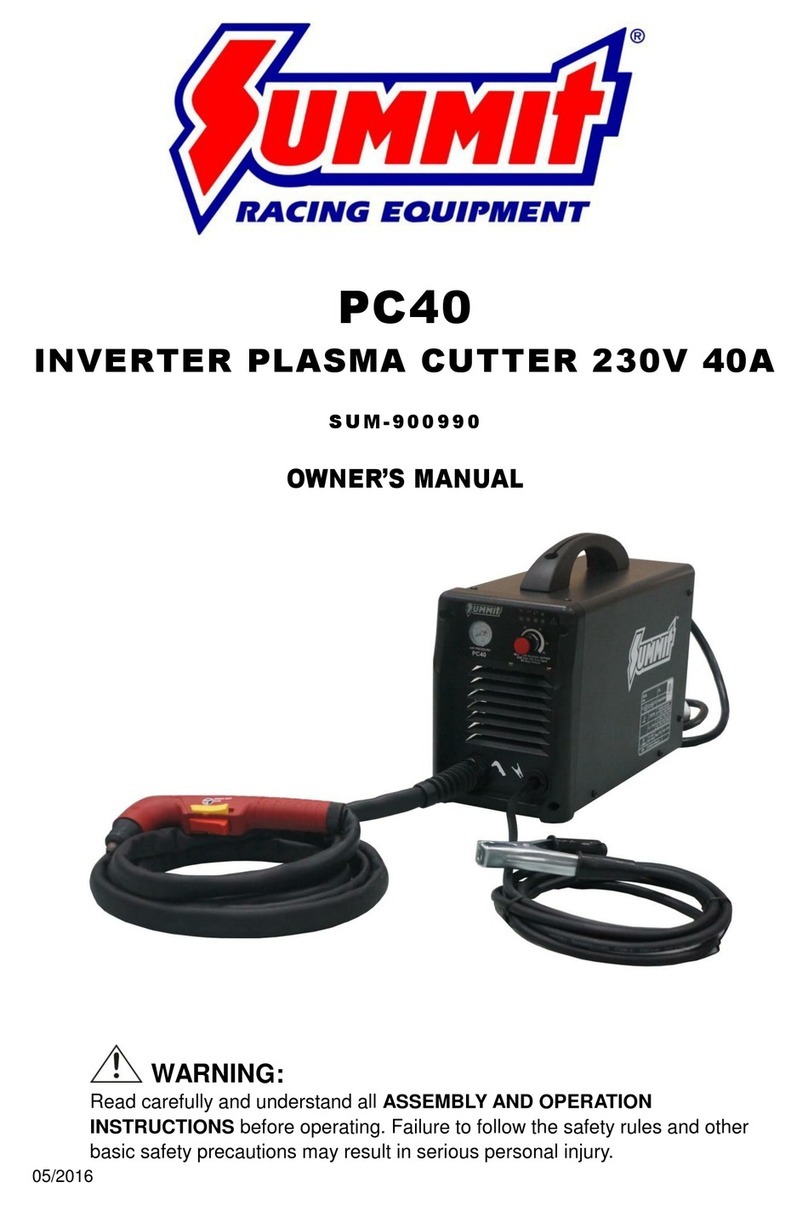
DO NOT WELD or cut where solvent vapours can
be drawn into the welding atmosphere or if radiant
energy can penetrate into atmospheres containing
even tiny amounts of trichloroethylene and perchlo-
rethylene.
H) Moving parts can cause damage
Moving parts, such as the fan, can cut fingers and
hands and catch clothes.
Keep all doors, covers and guards closed and securely
in place.
Protections and coverings can be removed, for pos-
sible maintenance and checks, only by qualified per-
sonnel.
Keep hands, hair, loose clothing and tools away from
moving parts.
Refit the covers and guards and close the doors when
the operation is completed and before restarting the
machine.
I) Noise
These welders do not in themselves produce any
noise exceeding 70 dB. Arc welding processes can
produce noise levels above this limit. Therefore, users
must implement the precautions required by law.
Ear plugs should be used when working overhead or
in a small space.
A rigid helmet should be used when others work in
the area above.
Welders should not use flammable hair products.
WARNINGS ABOUT ELECTROMAGNETIC COMPAT-
IBILITY
Although these welding machines have been built
according to the regulations, they can generate elec-
tromagnetic disturbances, that is disturbances to the
telecommunication systems (telephone, radio, televi-
sion) or to the control and safety systems. Read the
instructions carefully to eliminate or minimise inter-
ference.
ATTENTION: the welding machine has been de-
signed to work in an industrial environment, there-
fore, to operate in domestic environments it may be
necessary to observe special precautions in order to
avoid possible electromagnetic interference.
You must install and use the welding machine accord-
ing to the manufacturer's instructions. If electromag-
netic interference is detected, countermeasures must
be taken to eliminate the problem, possibly using the
manufacturer's technical assistance. In any case, do
not modify the welding machine without the manu-
facturer's approval.
- Do not keep combustible materials such as light-
ers or matches in your pocket.
F) Burns
Protect the skin against burns caused by ultraviolet
radiation emitted by the electric arc, by sparks and
slag from molten metal, using fireproof clothing,
which covers all exposed surfaces of the body.
Wear protective clothing and welder gloves, head-
gear and high shoes with safety tip. Button the shirt
collars and pocket flaps and wear trousers without
cuff to avoid the entry of sparks and slag.
Wear a mask with protective glass on the outside and
adiactinic glass filter inside. This is MANDATORY for
welding operations, in order to protect the eyes from
radiant energy and volatile metals. Replace the pro-
tective glass if it is broken, pitted or spotted. Avoid
oily or greasy clothes; a spark could ignite them. In-
candescent metal parts, such as work pieces, should
always be handled with gloves.
First aid equipment and a qualified person should be
available for each shift, unless there are health facili-
ties nearby for immediate treatment of eye and skin
burns.
G) Fumes
Welding operations produce harmful fumes and met-
al dust, which can damage health:
- Do not work in spaces without adequate ventila-
tion. Keep your head out of the fumes.
- In closed environments, use suitable exhaust fans.
If ventilation is not adequate, use suitable respi-
rators.
- Clean the material to be welded if there are sol-
vents or halogen degreasers, which give rise to
toxic gases. During welding, some chlorinated sol-
vents can decompose in the presence of radiation
emitted by the electric arc and produce phosgene
gas.
- Do not weld coated metals or those containing lead,
graphite, cadmium, zinc, chromium, mercury or be-
ryllium, unless a suitable respirator is available.
The electric arc generates ozone. Prolonged expo-
sure, in environments with high concentrations of
ozone, can cause headaches, irritation of the nose,
throat and eyes and severe congestion and chest
pain.
IMPORTANT: DO NOT USE OXYGEN FOR VENTILA-
TION!!!
Gas leaks must be avoided in small spaces. Large gas
leaks can dangerously change the oxygen concentration.
Do not place cylinders in small spaces.
1.995.217 EN - Rev. 1.1
NOVATIG 503 AC/DC
G.R.3
11




















